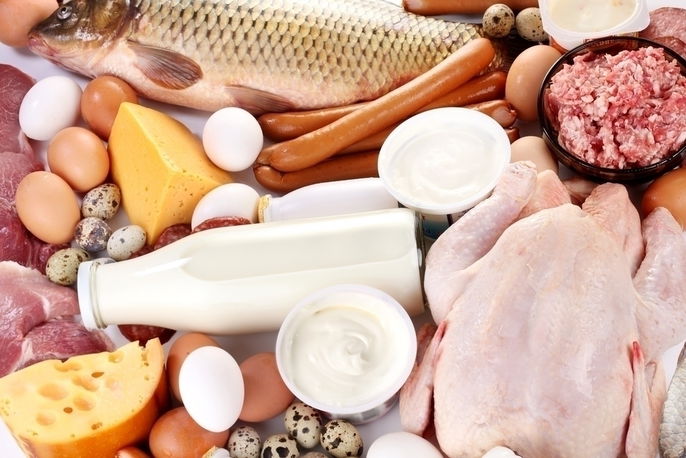A high protein diet is characterized by prioritizing your intake of foods that are rich in protein (like meat and eggs), and reducing your intake of high-carb foods (like bread or pasta). Eating more protein helps to reduce hunger and help to keep it full, as protein has a direct effect on ghrelin and other hormones that regulate appetite.
In this way, proteins can increase metabolism, helping to burn more calories, and the absence of carbohydrates in the diet would cause the body to use other sources of fat to produce energy.
It is normal to feel a little weak and dizzy within the first days of starting the diet. These symptoms usually resolve within 3 or 4 days, which is the time needed for the body to get used to a reduction in carbohydrates. You can also opt for a low carb diet to help you gradually reduce carbohydrates before starting the high protein diet. Read more about the low carb diet and what it entails.

What to eat
The foods you should eat in a high protein diet include:
- Low-fat cuts of poultry and derivatives, like chicken breast, turkey breast and eggs
- Lean cuts of red meat
- Fish, like sardines, tuna and salmon
- Low-fat dairy products and derivatives, such as skimmed cow's milk, white or low-fat cheeses, skimmed yogurt
- Plant-based drinks, such as almond milk;
- Vegetables, such as chard, kale, spinach, lettuce, arugula, watercress, chicory, carrots, cabbage, tomatoes, cucumbers, radishes, eggplant, Brussels sprouts, broccoli, cauliflower, artichokes, onions, garlic, paprika and asparagus
- Beans, such as red beans, chickpeas, corn, peas and soybeans
- Oils, such as olive, sunflower, corn or linseed oil
- Nuts, such as peanuts, chestnuts, almonds, hazelnuts and Brazil nuts
- Seeds, such as chia, flaxseed, sesame, pumpkin and sunflower
- Other foods, such as avocado, olives and lemon
A high protein diet can be followed for 15 days with a 3-day break, and can be repeated for a maximum of another 15 days.
Also recommended: 33 High Protein Foods (per 100 g) - Animal & Plant-Based Lists tuasaude.com/en/high-protein-foodsFoods to reduce
Foods that you should reduce intake of or eliminate are:
- Whire grains, such as pasta, rice and flour
- Tubers, such as potatoes, sweet potatoes and cassava;
- Sugar, and foods that contain it, such as cookies, sweets, cakes, soft drinks, honey and processed juices;
- Alcohol, such as beer, whiskey and wine.
It is important to avoid consuming these foods when maintaining a high protein diet to avoid changes in metabolism that cause the body to stop using protein and fat as an energy source. Check-out a list of high carb foods that you should also avoid consuming.
One week meal plan
Check-out a week long sample meal plan that outlines how you can organize your meals when maintaining a high protein diet:
The quantities of foods in this meal plan will vary according to age, sex, physical activity and health history. Therefore, it is important to consult a registered dietitian for a more complete assessment to calculate proportions and serving sizes.
Other considerations
Before starting any diet, it is important to consult your doctor or a registered dietitian to ensure the diet will not be harmful.
The high protein diet should only be followed for a maximum of 1 month, after which it is possible to maintain a low-carb diet to maintain weight and ensure adequate intake of all nutrients.
If you are vegetarian, there are foods that are rich in vegetable proteins, such as beans, chickpeas and quinoa, for example.
Contraindications to remember
The high protein diet should not be followed by patients with kidney problems, as consuming large amounts of protein can cause even more damage to the kidneys. Furthermore, it should not be followed by children, pregnant women, nursing women, or people with eating disorders.
Maintaining a high-protein diet for a long time can have metabolic consequences in several organs, and can lead to abnormalities in water-electrolyte levels, acid-base metabolism, bone metabolism, renal function and endocrine function.






























